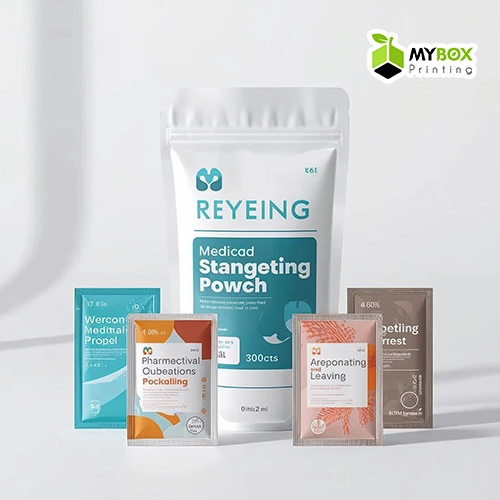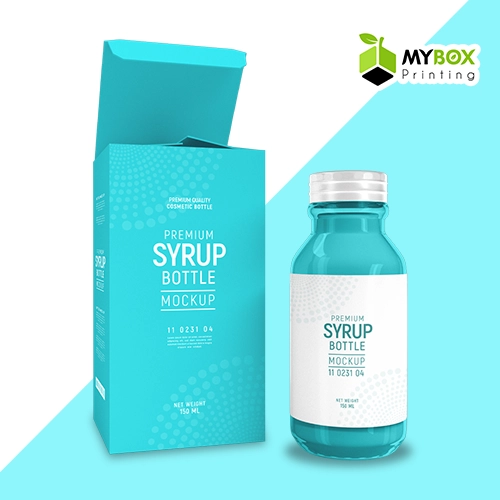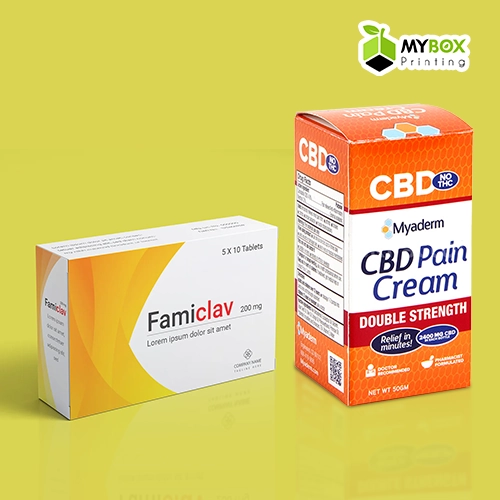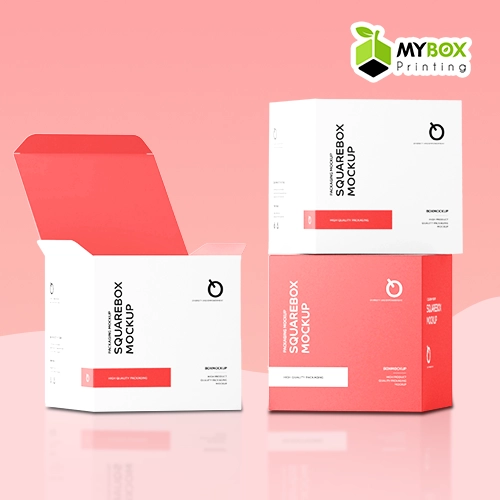Call Now
Mail Us
Pharmaceuticals are medications or supplements that have the power to cure diseases and save lives. But on the other hand, a little negligence in their packaging can put lives at stake. It can cause irreparable loss that cannot be reversed. Why does this happen? The external factors (moisture, sunlight, and heat) are the culprits that somehow enter the packaging. They spoil the oral solid supplements, degrade them, and eliminate their efficacy. The right packaging according to the specific form of pharmaceuticals is paramount to maintain the efficacy and formula of these medications. Are you a reliable brand that is seeking reliable packaging for your sensitive medications, ointments, and pharmaceuticals? You are at the right place. Get all kinds of pharma packaging certified by the Food and Drug Administration (FDA) at MyBoxPrinting. Contact us to get the right packaging that does not risk lives. ...read more read less
| Dimensions | All Custom Sizes & Shapes |
|---|---|
| Printing | CMYK, PMS, No Printing |
| Paper Stock | 10pt to 28pt (60lb to 400lb) Eco-Friendly Kraft, E-flute Corrugated, Bux Board, Cardstock |
| Quantities | 100 - 500,000 |
| Coating | Gloss, Matte, Spot UV |
| Default Process | Die Cutting, Gluing, Scoring, Perforation |
| Options | Custom Window Cut Out, Gold/Silver Foiling, Embossing, Raised Ink, PVC Sheet. |
| Proof | Flat View, 3D Mock-up, Physical Sampling (On request) |
| Turn Around Time | 4-6 Business Days , Rush |
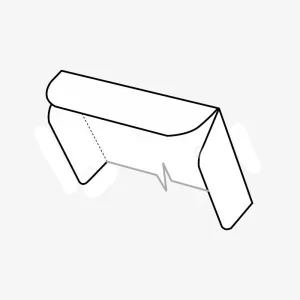
This style of folding cartons has three tab locks on the top lid that tuck in to close the box. These flaps tuck into the holes for closing the product without the need for any adhesive or glue.
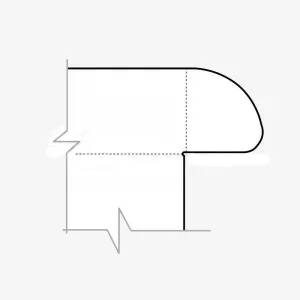
Cherry locks, also known as friction locks or snap locks, contain two ear-shaped flaps. These flaps help to lock the box without the need for any adhesive or glue.
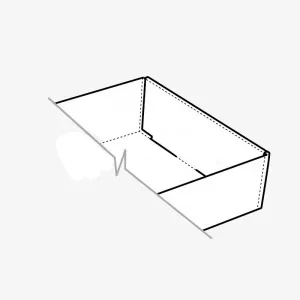
A Roll End Tray is also known as a walker lock tray or tray with self-locking ends. The tray folds over the side walls, and the small tabs fit into the slot, ensuring a secure closure without any adhesive.

The tear strips are the kind of perforated line or strips you can pull to open a box without the need for any tool. The removed tear strip also leaves a mark that the box was opened.
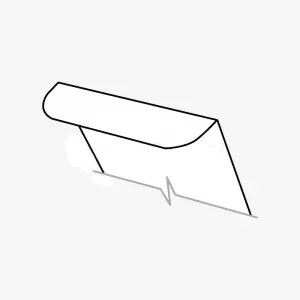
The tuck top lid is hinged to the box base that contains a flap on the top. The flap tucks into the slot to secure the box. This style is commonly used for folding cartons, corrugated boxes and mailer boxes.

Perforation in packaging contains small holes or cuts that facilitate easy opening, product ventilation, moisture control, and portioning. It makes it easy to tear the material.
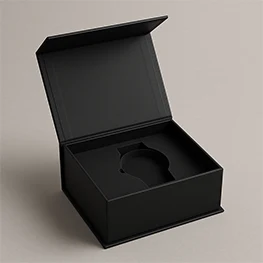
Black Kraft
It is a clean and attractive solid black color. That is depicting a touch of luxury. It is eco-friendly yet printable. Mostly foil printings are a perfect option for them.
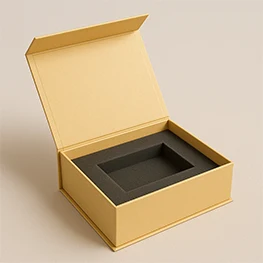
Card Stock
This is thicker than normal paper and is used for making postcards. Cardstock paper can be coated or uncoated.
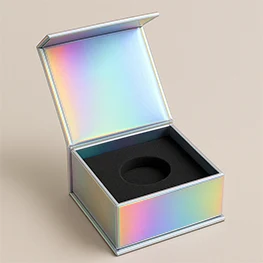
Holographic
These are famous and widely used in the cosmetic and apparel industry. It gives 3D effects from any angle to create attractive packaging.
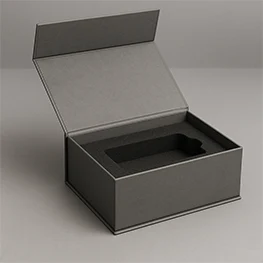
Grey Chipboard
It is made from recycled material, also known as uncoated recycled paperboard. This is mainly used for its sturdiness and thickness.
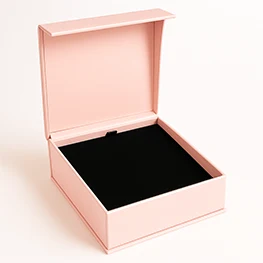
Mettalic
Metallic paper features a high-gloss metallic look, with excellent printability features, strong fold and tear-resistant, and is specifically used for premium packaging.
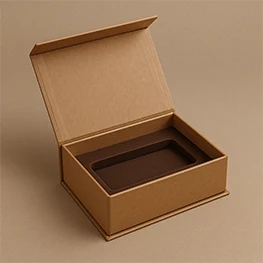
Natural Brown Kraft
It is popular among those with eco-conscious brands and organic products. This material offers a rustic, earthy look. which gives them a feel of nature and sustainable packaging.
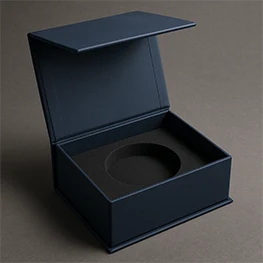
Textured Material
These papers have an uneven texture that is appealing. Mostly, these surfaces work great for embossing and debossing purposes.
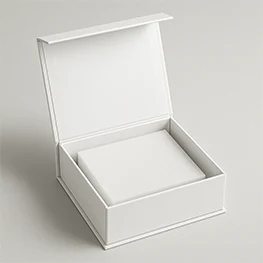
White Kraft
The strength of Kraft and a clean, natural appearance are a great combination. White Kraft is often used where brands want an eco-friendly appearance but with a bright, printable surface.
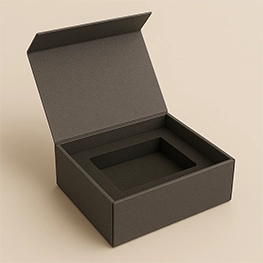
Bux Board
Bux Board is a thick type of paperboard made from recycled paper stock. It is an eco-friendly and durable material for the packaging of fragile and retail products. Available in thicknesses of 10pt to 28pt.
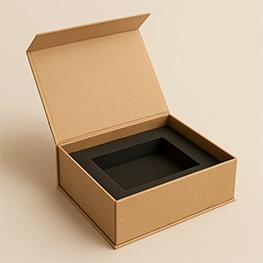
Cardboard
Cardboard is a durable material made from paper pulp or recycled fibres. It is a budget-friendly material ideal for e-commerce products, shipping boxes, and product packaging. Available in thicknesses of 10pt to 28pt.
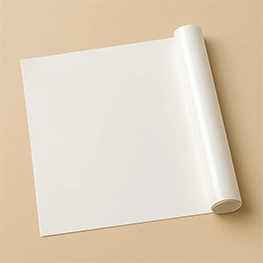
Coated Paper
Coated paper is a paper material treated with a coating to improve its smoothness, brightness, and printable surface. The coating for this material is made from clay, chalk, or other materials. Ideal for premium product packaging and food packaging.
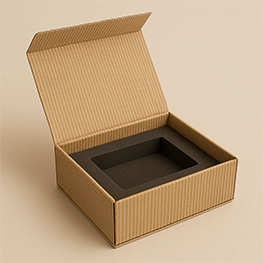
Corrugate Cardboard
Corrugated Cardboard is a triple-layered material made by corrugating a layer between the two cardboard layers. The inner layer may be Kraft, recycled paper, or test paper. It is sturdy enough for the packaging and shipping of heavyweight items.
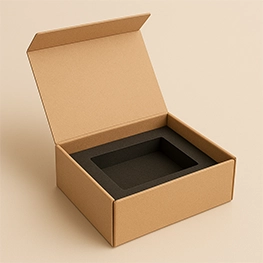
Paper Board
Paperboard is a durable paper-based material thicker than paper. This material is made from virgin wood fibres or recycled materials, ideal for product packaging.
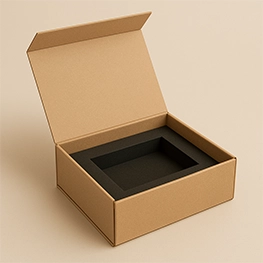
Rigid Stock
Rigid Stock is a luxury material resulting from the blending of card stock and paper stock. It is a high-quality, non-bending, and sturdy material for the packaging of luxury and limited-edition products like watches, jewelry, and gift items.
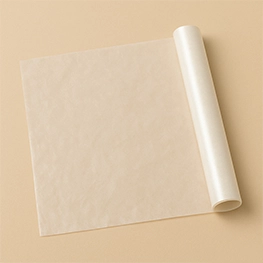
Wax Paper
Wax Paper is made from cellulose that has a food-safe coating resistant to fats and oils. This paper material is ideal for food packaging and take-out orders to prevent grease and oil from spoiling the carry bags.
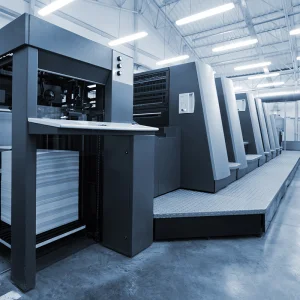
Offset Printing
Offset lithography is a three-step method of commercial printing. It works on the principle that oil and water repel each other. It uses three cylinders. It transfers the image from the printing plate to the rubber plate, then to the paper.
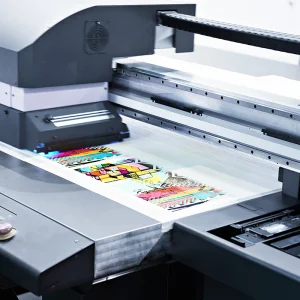
Digital Print
Digital Printing is a modern printing process that does not use a printing plate. It transfers the image directly onto the paper using CMYK inks. It is Ideal for printing on cardstock, folding cartons, fabrics, plastic, and synthetic substrates.
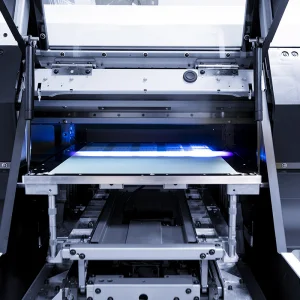
UV Print
UV printing is a fast digital printing technique that uses high-intensity UV lamps to dry and cure the ink. This technique is ideal for 3D printing on cylindrical objects like cups and bottles. The ink does not smudge on the paper.
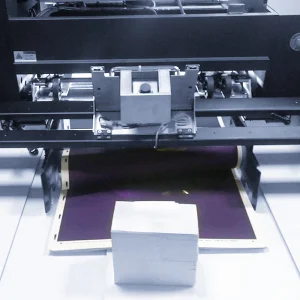
Scodix Digital Enhancement
This printing technique applies premium and high-quality digital embellishments and finishes to printed materials. It creates 3D effects, foiling, and metallic textures directly onto the paper without using plates or molds. Best for packaging, business and greeting cards, and book covers.

Water-based Inks
Sustainable and responsible alternative to traditional solvent-based inks. The water-based inks use water as the main solvent. They are made from water, acrylic resins, and organic solvents that quickly absorb into the fabric. They produce rich, high-quality, and colorful prints.
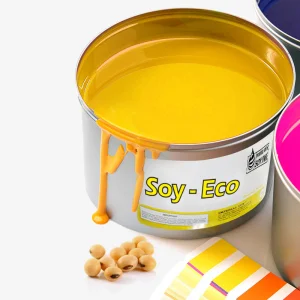
Soy/Vegetable Based Inks
Vegetable inks are renewable and recyclable inks made with vegetable oil, soybean oil, or corn oil. They are an eco-friendly alternative to petroleum-based inks that reduce the VOCs (Volatile Organic Compounds) in the air while printing.
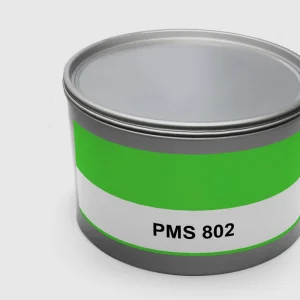
Fluorescent Color Inks
The fluorescent color inks make the printing glow extra bright. The special ink has tiny glowing bits that make the designs pop on the substrates. The main fluorescent colors for inks include pink, green, orange, yellow, and blue.

Oil Based Inks
Oil based inks are composed of soybean, vegetable, or mineral oils, hydrocarbons, and pigments. These inks are famous for their vibrant colors, excellent adhesion, longevity, and rich color output. They are great for printing on folding cartons, mailers, and paper bags.
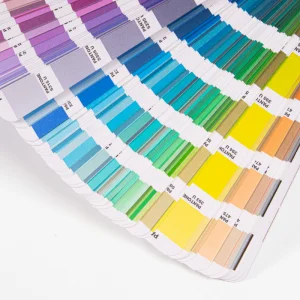
Pantone
Inks based on the PMS, which is a standardized color reproduction system. These inks are pre-mixed spot colors resulting from a precise ink formula. Each color is assigned a PMS number on the Pantone color chart. Best for company logos.
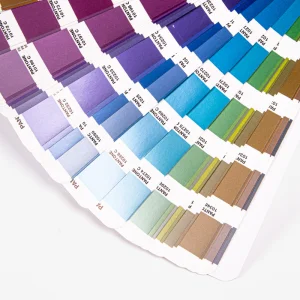
Pantone Metallic
Pantone metallic inks are special printing inks that add a metallic shine to the printed materials. These inks contain fine metal flakes like aluminum and brass to ensure an eye-catching metallic effect in packaging.
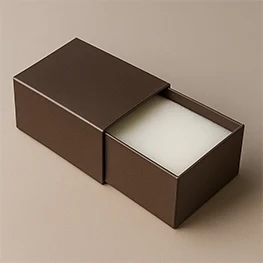
Anti Scratch Lamination
BOPP (biaxially oriented polypropylene) lamination, which resists scratches, scuffs, and fingerprints. Provides a smooth finish with added protection for boxes that are handled heavily.
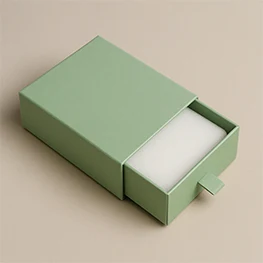
Aqueous Coating
A fast-drying, water-based finish that provides light protection and a clean surface feel. Comes in gloss or matte, this eco-friendly coating is great for boxed printed pieces and also resists fingerprints and minor scuffs.
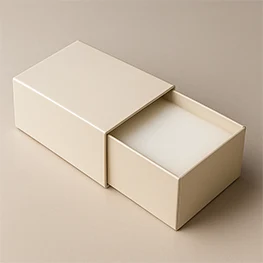
Lamination Finishing
A thin film is layered onto the surface of the box to improve durability and moisture resistance. Perfect for protecting full-color designs and maintaining box integrity through shipping or retail handling.
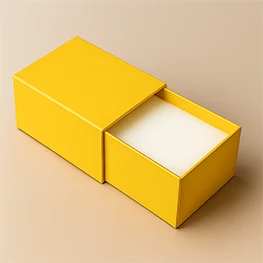
Matte Lamination
Adds a velvet touch to your packaging, leaving a soft matte surface that feels premium to the touch. This is ideal for brands that are interested in a more physical, elegant unboxing experience where shine and glare have been removed.
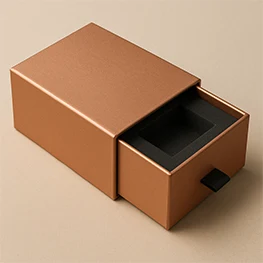
Soft Touch Coating
Adds a velvet touch to your packaging, leaving a soft matte surface that feels premium to the touch. This is ideal for brands that are interested in a more physical, elegant unboxing experience where shine and glare have been removed.
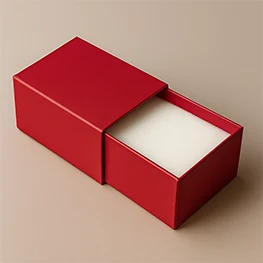
Soft Touch Silk Lamination
It combines the soft-touch feel of a paper with the durability of lamination. It is available in matte or satin and provides a luxurious finish, making it a great option for retail and subscription packaging.
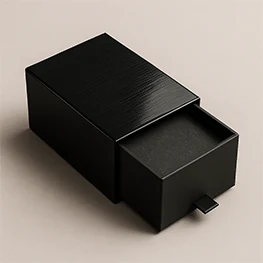
Spot Glass UV
Gloss coating is applied to specific areas of the print, contributing contrast and focus. Commonly used on logos or text to create shine against a matte background. Coating is UV cured to allow for durability.
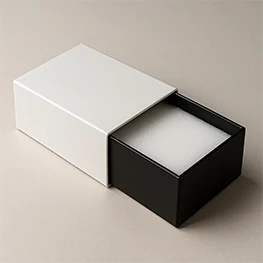
Varnish
A clear coating that adds shine, smoothness, and print protection. It can be applied with CMYK presses and comes in gloss, satin, or matte finishes. Great for making colors pop and keeping expenses low.
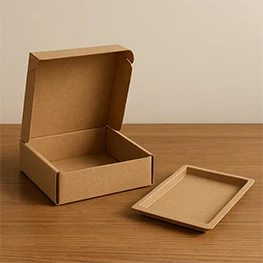
Natural Kraft Paperboard Insert
Inserts or compartments made of 100% recyclable material that offer cushioning in the shipping boxes. This material is a blend of virgin and recycled paper pulp that gives a natural brown color. Available in thickness from 12 pt. to 28 pt.
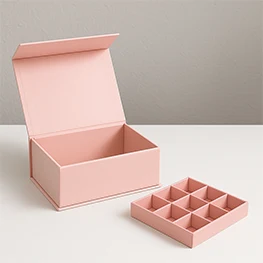
Folding Carton Box Divider Inserts
These inserts are custom-fitted to secure products in place, protect fragile products that need extra protection. They are made from paperboard, which makes them great for cosmetics, pharmaceuticals, and food packaging.
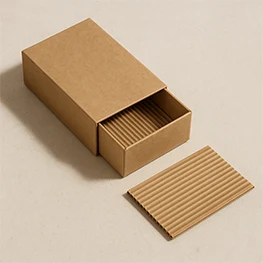
Natural Kraft Corrugated Insert
These inserts are made from unbleached Kraft corrugated material. They keep the things in place in the packaging and offer a cushioning effect. These inserts are best for organizing fragile items, foods, electronics, and glassware.
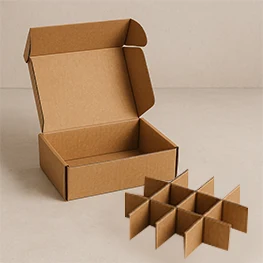
Corrugated Box Divider Inserts
These inserts are made of durable corrugated cardboard to divide the interior space of the box. These dividers keep the products in their place, separate from each other, and protect fragile items.
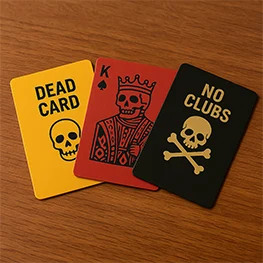
PVC Patching Cards
PVC patching cards are made from Polyvinyl chloride, which is a waterproof material. They are suitable for outdoor application. They allow Pantone color matching and 3D design elements that deliver temporary information.
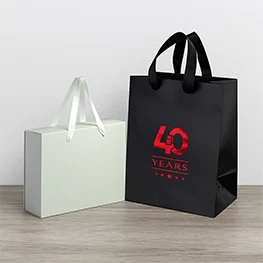
Ribbon Handles
Ribbon handles are soft and fabric straps that are added to the paper bags carrying paper bags and add a stylish look. The ribbons are of cotton or satin material, perfect for shopping bags, gift bags, and other types of packaging.
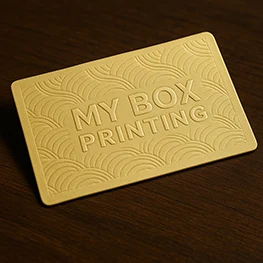
Embossing
Embossing raises the branding and design elements on the surface of packaging. The customer can touch and feel the raised elements. This leaves a lasting impression on their sensory memory about your brand.
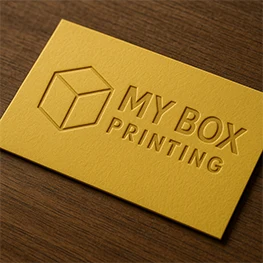
Debossing
Debossing is the opposite of embossing. In this technique, the design and branding elements are imprinted into the packaging. The imprinted design makes the customers interested in the packaging.
More Orders, More Savings! Get 30% Off On Bulk Orders !
A pharmaceutical product undergoes numerous processes and treatments before it is distributed in the market and to patients. Before they are distributed, they are properly labeled with serialization and packaged into containers. This packaging performs two main functions: prevention and measurement. They prevent external and environmental factors from contaminating the drugs and measure the specific quantity and dose of medicine. Moreover, the packaging must ensure the pharmaceuticals are best for use under hot, cold storage, and storage at room temperatures.
The parameters that measure the success of your pharmaceutical products are their efficacy and safety. If one of them is compromised, your products fail. Therefore, the right packaging is needed to achieve both parameters so that lives are not at stake after consuming these pharmaceuticals. The pharma packaging is designed by taking into account the requirements described by the Food and Drug Administration, i.e., the Regulatory Authority in the United States.
If you are looking for the right type of Pharma packaging that is customized to meet the FDA regulatory requirements, MyBoxPrinting is here to help with that. You can get the packaging according to the type of medication, in the size you want, and the design that matches your brand.
Pharma packaging is not only about presentation and storage of medications and pharmaceuticals. It's about increasing their shelf life and ensuring that it is best used under specific illnesses or diseases. The following reasons lead to the pharmaceutical packaging:
Pharma packaging is not only about presentation and storage of medications and pharmaceuticals. It's about increasing their shelf life and ensuring that it is best used under specific illnesses or diseases. The following reasons lead to the pharmaceutical packaging:
The drug formulation contains ingredients that are sensitive to sunlight and other external factors. No matter what type of medicine it is, “homeopathic drugs, allopathic medicine, folk medicines, and dietary supplements”. The medicine boxes and packaging serve as a barrier against these factors and extend their shelf life.
There must be adequate and accurate information on the packaging about drugs. The packaging often involves proper labeling that includes the name of the medicine, expiry date, dosage, and conditions of storage.
Branding is another primary reason for pharma packaging to label the brand to which this medication belongs. The packaging makes your brand visible and shows credibility.
The pharmaceutical packaging is not a single layer of packaging in which the product is packed, and you are done. Unlike other product packaging, this type of packaging is classified into three layers based on its distinct purposes:
Primary packaging refers to the type of packaging that directly interacts with the product. In terms of pharma, it refers to the containers that contain the drugs and medications in any form, i.e., solid, liquid, and semi-solid forms.
The examples of primary packaging include blister packaging, glass bottles, sachets, and vials. This packaging must be in accordance with US regulatory requirements for labeling and safety. The labels describe all the necessary information, like manufacturing date, expiry date, and the recommended dose.
The secondary packaging is the packaging of multiple primary packages, in simple words. Why is it done? This type of pharmaceutical packaging ensures that medication and drug containers are organized and safe during storage and shipment.
The examples include boxes, cartons, and shipping containers. They protect the fragile bottles and containers from external factors during storage in pharmacies, hospitals, and medical stores, and crush resistance during shipping.
The above types of packaging are not enough when you have to ship products in bulk. Here, tertiary packaging steps in when you want to ship medications in bulk from manufacturers to large healthcare facilities and distributors.
The purpose of this packaging is to organize and protect the primary and secondary packaging of products during transit. The examples include large shipping boxes, barrels, and edge protectors for providing a cushioning effect.
The primary packaging is the material that surrounds the medication. The pharmaceutical packaging industry is continuously evolving so as are the medications. Not the same type of primary containers are suitable for storing different forms of medicines. Because of the difference in properties and the state, the primary packaging is divided into the following types:
The most common form of medication that patients consume is the solid form. The tablets and capsules are the most common medicines consumed worldwide. The following packaging types are available for unit-dose pharmaceuticals:
You have consumed tablets or capsules at least once in your life. How were they presented to you in what packaging? They are packed in blister packs that are basically plastic film pockets with a lidding of aluminum foil or plastic material. They are tamper-evident as they leave marks when opened. These are unit-dose packaging that ensures no external elements spoil the medicine and degrade it.
Unlike blister packaging that is easy to open, the bottles feature a child-resistant design that does not allow children to accidentally consumption of drugs. These bottles are made from plastic materials (high-density polyethylene or polypropylene) or glass materials. The glass or plastic material depends on the nature of the drug, that how it reacts if exposed to sunlight. The sensitive drugs are kept in amber glass bottles.
This type of packaging was not popular earlier, but now it is gaining popularity with innovation in the pharmaceutical industry. People use Mylar bags and stand-up pouches for preserving dietary supplements and pharmaceutical products that need protection from heat and sunlight.
If the supplements you want to store are in powder and granule form, you must store them in sachets and stick packs. These sealed packs have an aluminum foil and paper lamination that acts as a barrier against moisture and sunlight. They are mostly used for over-the-counter medications (that do not require a doctor's prescription for sale).
Not all medicines are oral solid medications like tablets and capsules. The medicines are also available in liquid forms like syrups, tinctures, and drops. The liquid packaging demands preservation of sterility with no leakage. The main packaging systems for liquid dosage are:
Vials are small glass and plastic containers with a rubber stopper sealing and an aluminum crimping. This packaging solution is used for injectable medications and liquids, either one dose or a double dose. You can also use them for storing powder and capsules.
If you want a smaller version of vials for injectable medications and drugs, ampoules are for you. They are small glass containers that contain a single dose of the drug only. They feature an airtight seal that is breakable as well. The medication is extracted from the seal through syringes.
Bottles are one of the old pharma packaging used for the preservation of syrups and suspensions. They have screw caps that children cannot easily open. These bottles can also be customized with droppers and pumps. Normally, orange or light brown color glass is used for bottles as it shields against ultraviolet light and allows only the necessary light to pass. This not only prevents the photosensitive contents through photochemical reactions but also makes the contents visible through light.
The syringes are pumps with a plunger and a cylindrical tube. The plunger fits inside the tube called the barrel, which is pulled or pushed inside it to take in the fluid or expel it. The fluid is withdrawn or injected into other substances with the help of a needle at the tip. Cartridges are used for covering syringes and diabetes pens.
Between completely solid or liquid medications, there exist some semi-solid medications. These medications include ointments and creams that need non-reactive packaging. The following are some examples of semi-solid medication packaging:
For creams, ointments, and gels, plastic and aluminum tubes packaging is often used as they are easy-to-use containers. They are recommended and a common choice for such medications for their controlled dispensing systems. Their design is tamper-evident, which indicates the seal was opened. But you can reseal the packaging to prevent contamination from external factors.
For storing large amounts of cream and ointments, wide-mouth jars step in. They make it easy to access the product because of the large opening area. But in terms of protection, they are not preferred over the tubes because there are more chances for contamination once the seal is opened.
In addition to tablets, syrups, suspensions, creams, gels, and ointments, inhalers and aerosols also need unique packaging.
The MDIs are inhalers that contain medication inside a pressurized canister with an actuator. Whenever the patients inhale, the actuators release a precise amount of medication. These containers are made from aluminum or stainless steel.
DPIs are the medical devices that deliver the medication in the form of powder when the patient inhales. The packaging stores blisters and capsules with a specific dose of powdered medication.
The aerosol cans are topical sprays pr foams that have an active valve. The active valve releases the medication in the form of a fine mist or foam.
The second level of packaging is the secondary packaging. It involves boxes and containers that protect the primary packaging from damage during storage and shipping. Its purpose is not only protection but also the branding of the pharmaceutical companies to which this medication belongs. The following are used as secondary packaging for pharmaceuticals:
These are durable tuck boxes with flaps that tuck in to enclose the product from external stress and pressure. They are easily customizable for branding purposes, i.e., brand name, logo, dosage, warnings, and prescription. Cardboard material is also used for large cartons that can store a bulk quantity of medications.
Packaging sleeves are made from paperboard that can hold blister packs, sachets, and syringes in organized forms.
Besides brand promotion and display of necessary information on drugs, they make the products visible on the shelves.
The tertiary is the pharmaceutical packaging type that contains and protects the secondary packages during shipping. It is made from durable and sturdy materials that have enough crush and impact resistance to withstand the delivery times. This includes corrugated cardboard folding cartons and shrink wraps that transport pharmaceuticals in bulk from pharmaceutical manufacturing companies (OEMs) to distributors and healthcare partners.
Pharmaceuticals and medications are critical supplements that need special care. Choosing the right material is a critical decision in which product properties, sustainability, cost, and type of packaging must be taken into account. We recommend the following materials for different types of medication, as per the guidelines of the Food and Drug Administration:
Glass is one of the preferred packaging materials for medication packaging that has been used for decades. It is a non-reactive, inert, impermeable, clear, and transparent material for bottles, vials, and ampoules. The following types of glass materials are used:
1. Borosilicate Glass: Ultra-resistant glass material to ensure high resistance to chemical attacks.
2. Amber glass: To protect light-sensitive medications from ultraviolet rays and visible light.
3. Soda Lime Glass: It is a less expensive and surface-treated glass material to prevent oral liquid medications from direct sunlight and heat.
We recommend that you choose borosilicate glass containers for injectable medications and sensitive products, and amber glass for oral liquid medication. Soda lime glass is recommended for light-sensitive medications.
Plastic is a lightweight, versatile, and cost-effective alternative to glass. It is mostly used in pharmaceutical packaging for these properties. The pharmaceutical manufacturers use different types of plastic for different products:
PET: Polyethylene Terephthalate
It is a clear plastic material that has properties such as good strength, barrier and visibility.
HDPE: High-Density polyethylene
It is a thermoplastic material that is used to produce chemically inert and durable containers. This material is suitable for high-quality pharmaceuticals as the HDPE containers are sterilizable.
PP: Polypropylene
This plastic material offers good chemical resistance and has a high melting point.
LDPE: Low-Density Polyethylene
It is a type of plastic that is non-toxic and chemically-resistant. This material maintains sterility and ensures a protective barrier for sensitive pharmaceuticals and medications.
PVC: Polyvinyl Chloride
It is a transparent plastic material that is easy ot form. Manufacturers use this material for blister cards.
We recommend plastic material when you need flexible packaging. You can use this material for bottles, containers for injectable drugs, blister packs, and other pharmaceutical products.
Aluminum is an excellent material that has barrier properties against moisture, light, and oxygen. We recommend using a lidding material in the blister packs, tubes, and aerosol cans that will not permit any external materials.
Paperboard is a non-toxic, food-safe material that is used for packaging and labeling the drug product containers. They enable you to customize them with your brand name and medication information that is necessary for a satisfactory user experience.
We highly recommend paperboard material, including cardstock, Kraft paper, and cardboard, for packaging bottles and glass containers. Our vitamin packaging is one of the most famous packaging, made up of cardstock material.
Corrugated cardboard is a sturdy material made of triple layers. It is formed by corrugating a Kraft layer between two cardboard layers that offer crush resistance during shipping and transportation.
Corrugated boxes make it possible to transport medications from leading pharmaceutical manufacturers to distributors, hospitals, and pharmacies. We highly recommend corrugated material for smart packaging with affordable pricing to handle rough delivery times.
For sealing the vials, ampoules, and bottles, the pharmaceutical-grade rubber is used as stoppers and closures. We recommend it because of its inertness and barrier properties.
The pharmaceutical packaging is associated with lives, and a little negligence can cost an irreversible loss. Therefore, pharma packaging designs and materials are highly regulated by FDA standards. The regulations may vary in different regions, but the general regulations are listed below:
The packaging materials must be non-toxic and non-reactive and must not interact with drugs to form harmful substances. In short, the material must be chosen according to the drug.
The material must offer a barrier against the culprits that degrade the medication and affect its efficacy. It must not permit direct sunlight, heat, or oxygen to contaminate the pharmaceuticals.
The sterile packaging is necessary to maintain the sterility of products like injectables throughout their shelf life.
Packaging must have tamper-evident features that indicate the product was opened or altered. It gains the customer's trust and ensures product safety and quality.
According to the Poison Prevention Act of 1970, the packaging must not be too easy to open by children. The medicines must be safe from the reach of children because they can lead to accidental ingestion. Therefore, the packaging must be child-resistant so that it does not let them open the container on their own.
The pharmaceutical or drug products must be properly labeled with accurate information. There must be the drug name, expiry date, dosage, strength, and storage conditions.
MyBoxPrinting is the only choice of 200+ businesses for custom packaging and design services. We at MyBoxPrinting design reliable packaging according to the type of product and industry needs. As a pharmaceutical business, you will receive packaging that meets quality and regulatory requirements and is perfect for storage under hot, humid, cold, and room temperature storage conditions. Besides this, we offer smart packaging with QR codes, NFCs, serialization, and holographic labels. Businesses that customize packaging with us enjoy the following perks:
We design packaging that makes you visible in the crowd of thousands of other brands. Your product gets noticed and brings sales for your business. Our belly band packaging and massager packaging help hundreds of health and fitness-related businesses to grow their businesses and give them a unique recognition in the market.
Get the most affordable and cost-effective pricing for custom packaging in the whole USA packaging industry from us.
Our experienced team of graphics designers is here to help you throughout the packaging design process, from logo creation to designing a template.
You get exclusive discounts on placing bulk orders. The discount makes packaging more affordable and saves you money.
We have a polite customer support team to assist and guide you in case of any inconvenience. The customer service team is 24/7 available to entertain your queries.
To ensure product safety and food safety, we use FSC-certified and FDA-approved materials and follow Good Manufacturing Practices (GMP) guidelines. The packaging does not risk the lives of customers.
For designing pharma packaging, we take into account the patient comfort and ease of use. So, we design patient-centric packaging that contains a large font and an easy-to-open design for seniors. Color-coded information is used for better visibility.
You can enjoy endless customization options from custom shapes and sizes to add-ons, finishes, and printing techniques.
The quality assurance team checks the packaging for errors and keeps in touch with the client during this process. The team leaves no room for errors in the packaging that can put lives at stake.
For standard orders, the turnaround time is 8 to 10 business days. But for rush orders, the time is 4 to 6 business days.
We believe in building a bridge between our online store to your doorstep so delivery is free of cost all over the USA.
Looking for a packaging partner with expertise in sustainable packaging with FDA regulatory compliance? You are at the right place! MyBoxPrinting offers you customized pharma packaging according to the type of drugs or medicines at wholesale rates. Contact us now if you want reliable pharmaceutical packaging.
Want to get the right type of packaging for your pharmaceutical products? Get a free quote today!
Order a Sample Kit Order a MyBoxPrinting Sample Kit to see our premium materials and print quality firsthand.

FAQ's Explore answers to some relevant questions about creating a custom box. If you've any query, feel free to contact us!
The materials are chosen according to the properties or medications they are going to store. The common materials include glass, plastic, aluminum, cardboard, corrugated, and paperboard.
The regulations for pharmaceutical packaging state that the materials must be compatible with the type of drug or medication. It must not degrade the efficacy and product quality by interacting with chemicals.
The pharmaceutical packaging serves two main purposes: protection from environmental factors (heat, direct sunlight, and moisture) and measurement of dose for a specific medicine. Moreover, it is sure that it does not interact with he chemicals used in medications to degrade the product quality.
Yes, our packaging is safe enough to be stored at room temperature and in other storage conditions, like in cold and dark.
Yes, our pharma packaging is regulated by the Food and Drug Administration, ensuring that no life is put on stake.
Yes, we can provide you with smart packaging that keeps pace with the packaging innovations. We can include barcodes that are scannable barcodes and serialization to prove your brand’s credibility.
Customer Reviews See why clients trust us through their honest, real feedback read MyBoxPrinting reviews



Related and Inspiring Product Discover products that inspire and elevate your business.
